Review: Kuretake No. 40 & 50 Sable Brush Pens

Today, I'm reviewing these two Kuretake brush pens, the Kuretake No. 40 and No. 50 sable brush pens.
I bought the No. 50 about a year ago but didn't use it much because the ink flow wasn't that great. Recently I bought the No. 40 and the ink flow was fantastic.
A reader told me that he had bought two Kuretake brush pens and both had ink flow problems. So there could be some quality control issues. But when you get a good one, it's is amazing. More details below.
Difference between Kuretake No. 40 and No. 50
Both use sable for the brush bristles so they mimic traditional brushes in terms of usage.

In terms of design, the No. 50 has a glossy body a two colour gradation of gold and black on its cap and body.

The No. 40 has matte black surface for the cap and body. Both are beautiful and the size is just right.
The clip is gold in colour. When you uncap, you reveal the section with gold trimmings at top and bottom. No. 50 has an extra trimming on the bottom of the cap.

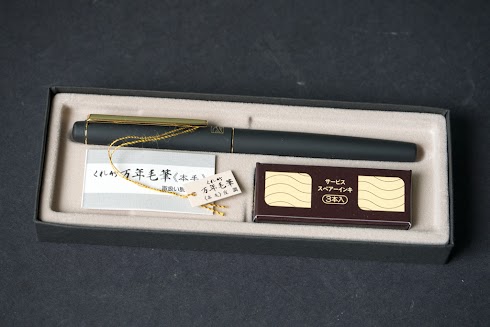

No. 50 comes in a nice wooden box while the No. 40 is housed inside a cardboard box.
The No. 50 is more expensive because of its design and the packaging. Price difference is under $10 on Amazon. Whether it's worth is to pay the extra dollar will depend on which design you like better. The wooden box is nice but not necessary.
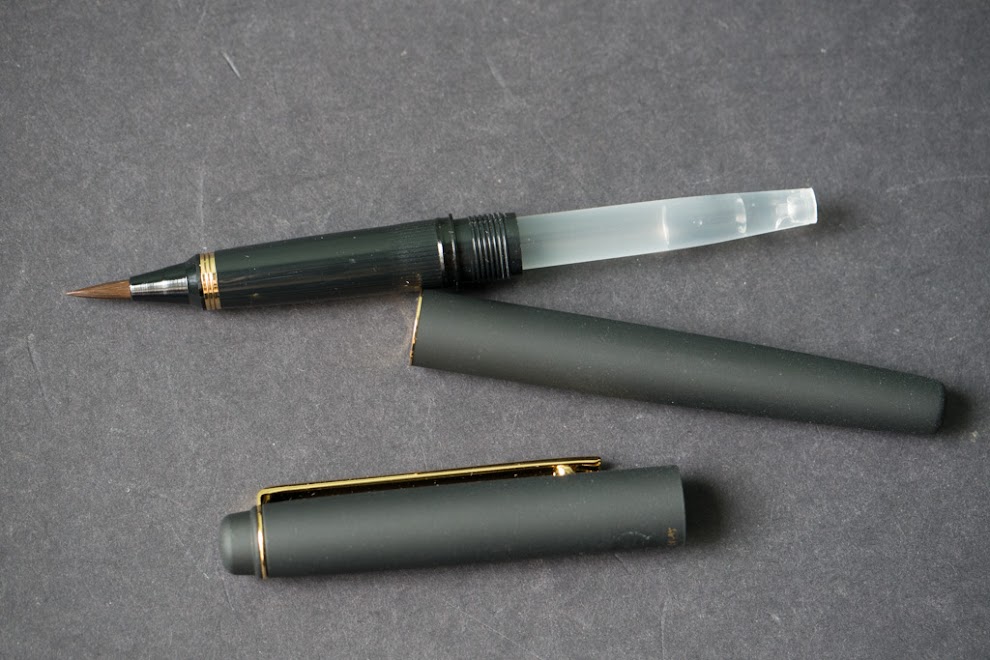
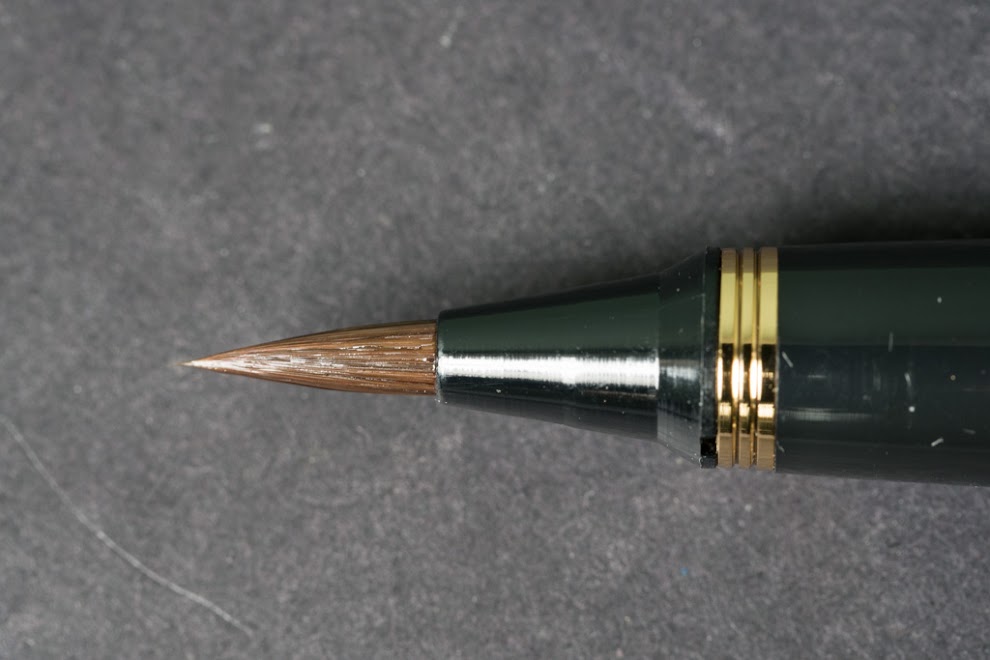
When you first uncap the brush pens, you'll notice the tips are wet. To keep the tips sharp, the brush pens were installed with disposable cartridge filled with water. I like it when companies pay attention to the details. Most other brands just ship their brush pens with dry tips.
Below are strokes you can create on smooth paper.

The brush pens are delicate to control and capable of really fine lines to 4mm thick lines. Apply slight pressure and the stroke thickens. They are quite a joy to use. The bristles go back to a sharp point after each use.
On smooth paper, the brush pens are able to produce sharp edges quite easily. However if you draw a bit faster, then you'll start to see the dry brush effect on the edges.
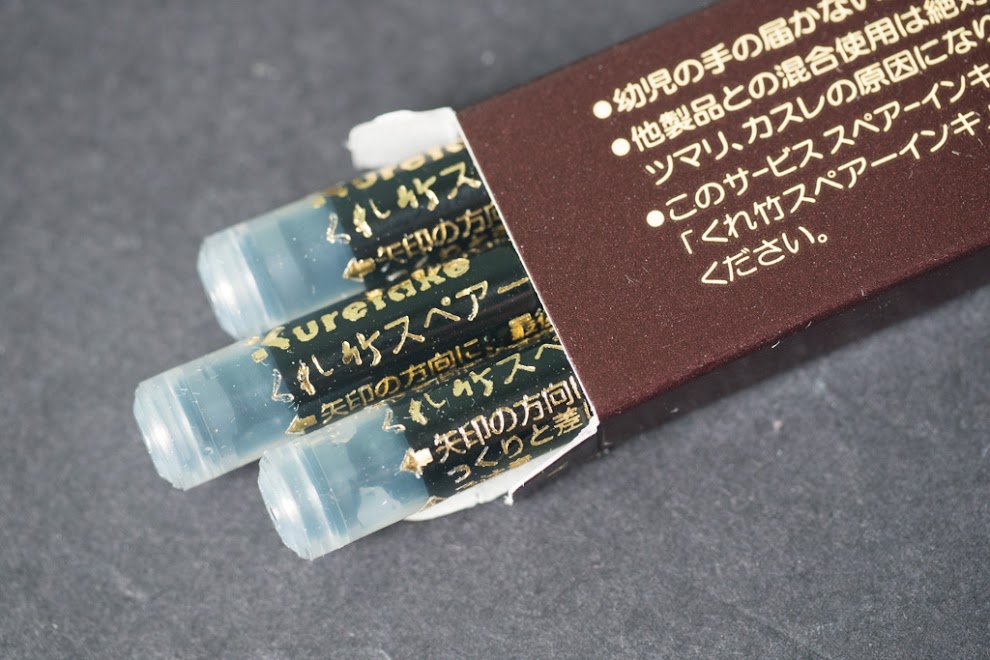
The ink I've used are from the ink cartridges provided. It's not waterproof.
The Kuretake brush pens use Platinum converters and with that you can choose specific inks to use.
Be careful when using pigmented inks in these brush pens. If you really want to use pigmented ink (they are waterproof), check out Platinum Carbon Ink and the Sailor Kiwa-Guro Ink which are both nano pigmented.


I love the ability to be able to cover large areas by using the sides of the brush. On smooth paper, especially if the paper don't absorb the ink quick enough, your wash may dry with some sort of gradation. The sketch of the vintage car above shows the gradation.

While you can use thin strokes for details, you can use thicker strokes for a more stylistic look.

The brush pens produce quite a different look on paper with more texture. There's more tendency to produce the dry brush effect. To produce sharp edges, you have to go really slow, or the better way is to use smoother paper instead.


The dry brush strokes are more textural and create a totally different feel to the artworks.
When you're using it on textured paper, the ink gets spread more evenly.
When the brush pen gets clogged
Be warned that the following procedure may damage your brush pen.
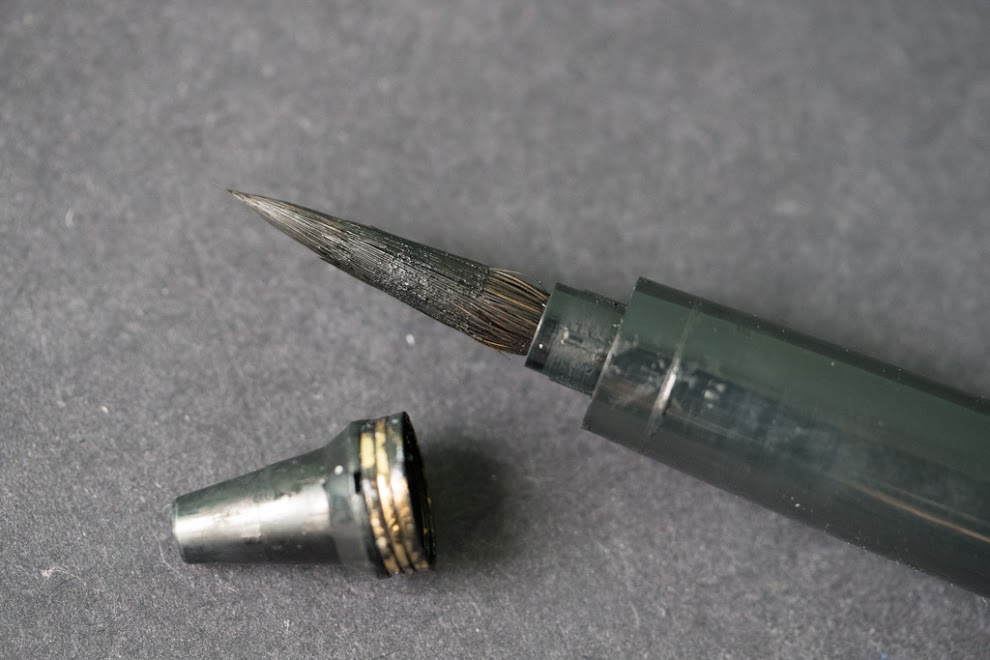
The plastic "ferrule" that's holding the bristles together can be removed. To do so, twist very slightly in clockwise and anti-clockwise manner. You don't want to twist too hard because the bristles will turn with the plastic part. Once it's loose enough, you can just pull it out to expose the bristles. Now you can start the cleaning.
Put the plastic "ferrule" back very carefully so as not to damage the sharp tip of the bristles.
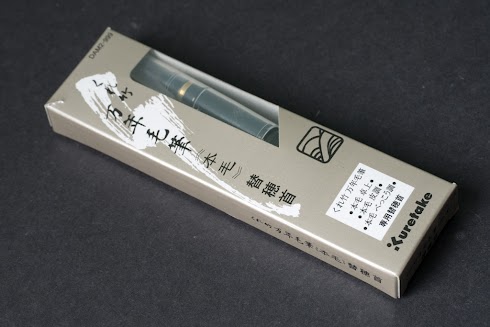

If that does not remove the ink clog, just buy yourself a sable brush tip replacement (shown above).
If your brush is too worn, you should also get the replacement sable tip. Generally speaking, the sable bristles should be able to last quite long with proper care.

Update 2020: This is how the matte brush pen looks after a few years. It looks like humidity and the matte surface don't like each other.
Conclusion
The Kuretake sable brush pens are the best compared to the other brush pens I've used. The caveat is you might need some luck to get one with good ink flow.
It's quite pricey but it's definitely worth the money.
To check out other brush pens, visit https://www.parkablogs.com/content/brush-pens-compared-drawing-purposes
Availability
I suggest getting the brush pens on Amazon as they have better prices. I got ripped off buying from some other website that I shall not name.
The links below go directly to the brush pens on Amazon.
Kuretake No. 40 Brush Pen is available on Amazon US | CA | UK | DE | FR | IT | ES | JP
Kuretake No. 50 Brush Pen is available on Amazon US | CA | UK | DE | FR | JP
Kuretake Sable Brush Pen Replacement tip is available on Amazon US | CA | UK | DE | FR | IT | ES | JP
Try searching Jackson's Art Supplies too.
Comments
Hi there :)
Hi there :)
I have just bought the Kuretake Sable No. 40. The lines it puts down are too dry (half the time) even when drawing quite slowly. Can I do something to improve the ink flow?
Thank you very much,
Anja
@Anja
In reply to Hi there :) by Anja (not verified)
@Anja
Try ink that's more liquid. Maybe use Noodlers Bulletproof Black (waterproof). If you don't need waterproof, you can use any of those fountain inks (usually dye-based), such as from Parker or other popular fountain pen makers.
Is it possible to replace the
Is it possible to replace the cartridge by a tank (platinum converter ) with real Chinese ink ?
(I wonder if the Chinese ink could spoil the brush pen’ mechanism )
Thank you
Is it necessary to wash the
Is it necessary to wash the sable tip after use ?
@Helene
In reply to Is it possible to replace the by Helene (not verified)
@Helene
Chinese ink is pigmented and will clog the pen. It's best to ink that flows better, Rotring (black) and Noodler's Bulletproof Black are good if you need waterproof quality.
Otherwise, you can use any dye based fountain pen ink.
Washing is not necessary, but it's definitely good to do so if you are not going to use the pen for weeks.
Thank you. I asked this
Thank you. I asked this question because I use my 50 million brush pen for Chinese calligraphie.
So looking at the 2020 update
So looking at the 2020 update note and pictures does this update mean the No.40 pen body isn't made out of metal and this is caused through humid environments?
@yoksna
In reply to So looking at the 2020 update by yoksna (not verified)
@yoksna
It's the material that's used that's reacting to humidity. It's still a sturdy pen body.
It's like how some rubber will just react badly with humidity. E.g. Rubber straps of Swatch watches.
Do you have any pictures of
Do you have any pictures of the No. 50 after years of use?
I'm debating getting one of these two pens. I normally care more about practicality, but if the No. 50 holds up better then I think it might be worth the cost even if it's just an aesthetic thing.
@Angel
In reply to Do you have any pictures of by Angel (not verified)
@Angel
Body of 50 still looks good. Only thing that has to change is the refill and brush section

Add new comment